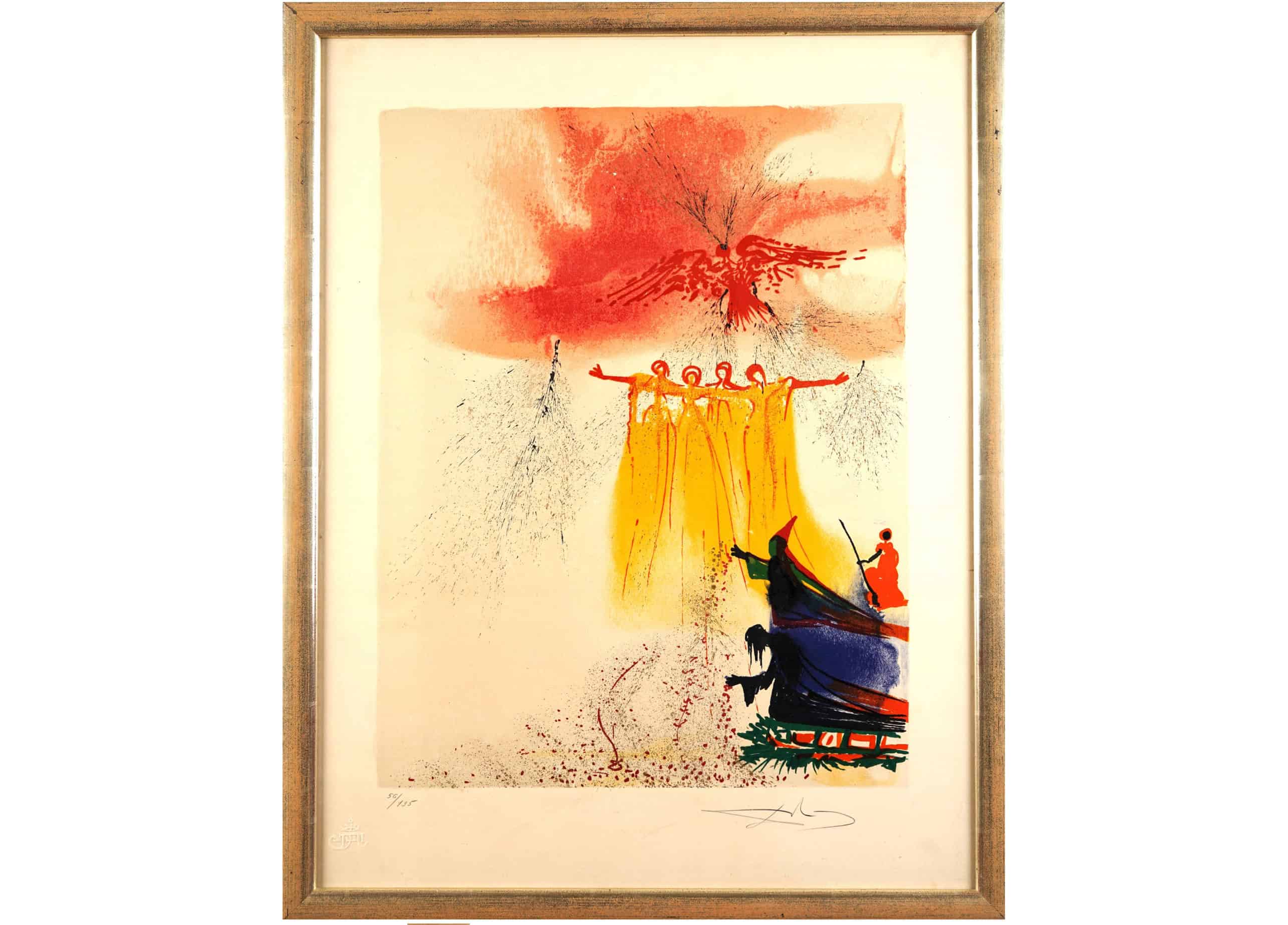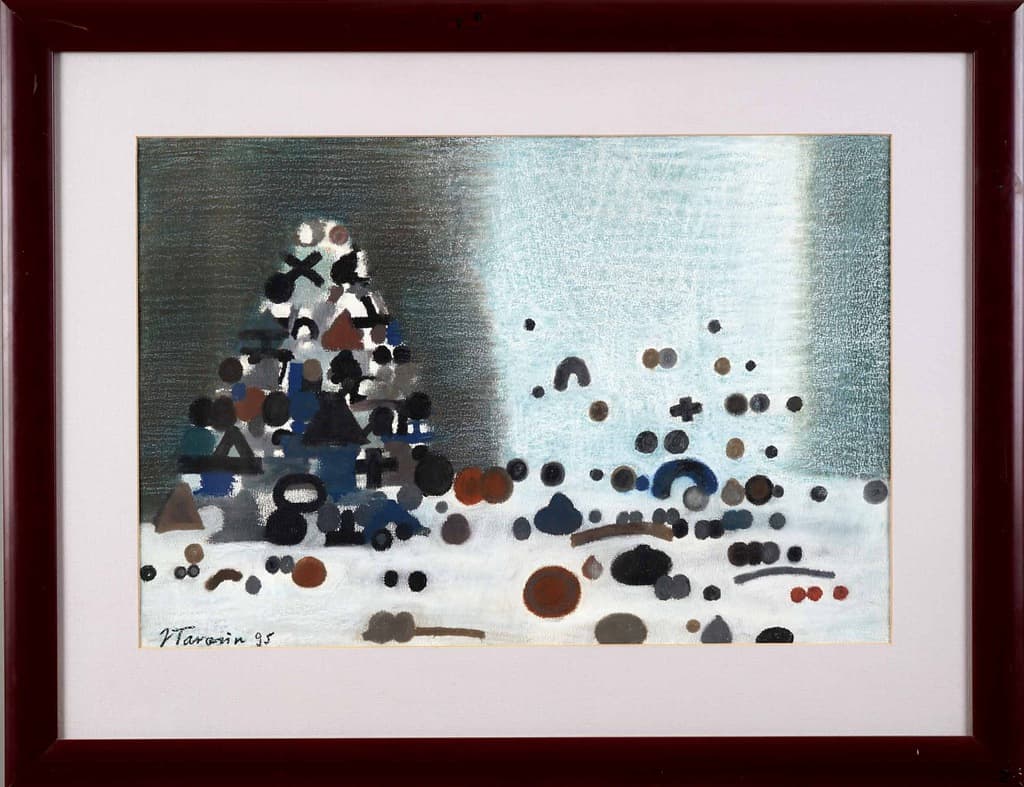How to start collecting contemporary art? What style or specific period to choose? How to know if an art piece is in good taste and is a worthy investment, especially with so much art available online? How about starting your collection with an original work by Salvador Dali?

Salvador Dali, “Fairies”
Dali shared his thoughts on finding his own style as an artist: “Begin by learning to draw and paint like the old masters. After that, you can do as you like; everyone will respect you.” As one of the greatest representatives of the surrealism movement, he meant that technical skills are the basis, and are the first step in finding one’s own artistic style. This advice could just as well apply to art collectors. It might be best to start with collecting classics of art, and build up knowledge and solid foundations before experimenting with more courageous choices. There are no shortcuts to learn about art movements and styles – it takes time and effort. But, a good place to start might be our “Step by step” guide for new art collectors, created in partnership with Allegro – Collector’s Zone. “Step by step” outlines some of the essential information to help you navigate the art world and help you build your collection through online auctions. This month we recommend surrealists artists and talk about surrealism – a cultural movement that started in 1917, and is best known for its visual artworks and writings. Salvador Dali (1904 -1989) was a key figure of surrealism. His paintings were inspired by the avant-garde trends (e.g. futurism and cubism), but also XVI-XVII paintings. He combined his artistic interests with psychoanalysis, which resulted in a unique, instantly-recognisable style. The “paranoid-critical” method, as he called it in the book “La femme visible” from 1930, referred to dreams (“objectivization of delirious associations”) and fantasies. His paintings are characteristically stretched and fluid. True to his wide interests, Dali also wrote, including movie scripts, and produced sculpture and prints. One such print is available from Polski Dom Aukcyjny, via Allegro.
Salvador Dali, “Fairies” by Polski Dom Aukcyjny
Until 8 December, Polski Dom Aukcyjny is selling on auction an original work by Salvador Dali titled “Fairies” (Wróżki) In the following technique: lithographic flat print, ink, lithographic crayon; 70 x 52 cm in the light of the frame (sheet size); ref. p. d .: Dali; reference number of item l .: 56/195; stamped mark L.: Dali
It’s unique colour lithography signed by the artist. Its authenticity is confirmed by a certificate issued in Luxembourg in 1975. Its one of only 195 copies of this lithograph (the printing plate was destroyed after making the prints). This beautiful piece impresses with a decorative motif and saturated colours. The work was reproduced in the Gallery of Fine Arts der Freizeit-Bibliothek in Frankfurt.
Joan MIRÓ (1893 – 1983) ‘Kompozycja X/IV’, 1972 by Galeria Nautilus
Gallery Nautilus is offering an original colour lithography by Joan Miro (dimensions: 32 x 49.3 cm. Signed on the reverse: Joan Miro / Lithography original. The work is attached to the monumental publication by Raymond Queneau ‘Joan Miró. Lithographe “, vol. II. Mazo & Cie, Paris 1972.
This decorative work, carefully framed, perfectly reflects the artist’s Spanish style and temperament. Lithographie was his favorite medium. By using black ink and contrasting it with the sophisticated palette of other elements, the work achieves surprising and funny effects. An individual style of the work, bordering on surrealism and romantic abstraction, is based on emotions and spontaneous execution. Drawing on the traditional art of Catalonia, adding his own symbols and objects, Miró built the perfect reflection of the joyful world he longed for.
Joan Miró (1893 – 1983), Spanish painter and sculptor, is considered one of the greatest artists, alongside his 20th-century peers such as Picasso, Chagal, Klee and Dali. In 1914 he studied in Barcelona. Initially, under the influence of the works of Vincent von Gogh and Fauvists, he painted portraits and landscapes. In 1919 he was in Paris, where he painted cubist still lives and landscapes. From 1924 he was associated with the Dadaist movement, and then with surrealism. His paintings were influenced by Paul Klee’s work. In 1947, Miró went to the United States for the first time, where he had several of his monographic exhibitions, the most important of which was at the Museum of Modern Art in New York in 1951, followed by another one in 1959. In 1954, the artist won an award at the Venice Biennale. One of his works was a tapestry created in 1974 for the Word Trade Center; it adorned the interior of the building and was destroyed together with both towers on September 11, 2001.

Joan MIRÓ (1893 – 1983) ‘Kompozycja X/IV’, 1972 by Galeria Nautilus
“Bolek and Lolek in the Wild West” by PersonalArt
Bolek and Lolek in the Wild West – Lolek II, Technique: Emulsion paint, Substrate: Celluloid film, Format: 22.5 cm x 27 cm. Year: 1969-1986
Original, hand-painted animation film for the series “Bolek and Lolek”, and the big screen version of the series, titled “Bolek and Lolek in the Wild West”. Bolek and Lolek in the Wild West was produced in 1986, realized in a western convention, based on the animated series of the same title from 1972 by a film studio in Bielsko-Biała. The last animated film starring Bolek and Lolek.

Bolek and Lolek in the Wild West – Lolek II, Technique: Emulsion paint, Substrate: Celluloid film, Format: 22.5 cm x 27 cm. Year: 1969-1986
Henryk Hermanowicz, “Woman with closed eyes” by Galeria Dyląg
Henryk Hermanowicz, Woman with closed eyes, 1937 / l. 60., bromine / paper, 16.7 x 12.9 cm, author’s stamp on the reverse. Life time print, bromine / paper, 16.7 x 12.9 cm, author’s stamp on the reverse.Very good condition. A certificate of authenticity will be attached to the work.
Henryk Hermanowicz – (1912-1992) photographer, student of Jan Bułhak. Member of the Association of Polish Art Photographers (since 1947), National Geographic Society, honorary member of the Danish Photographers Club, winner of numerous awards, including Knight’s Cross of the Order of Polonia Restituta.

Henryk Hermanowicz, “Woman with closed eyes” by Galeria Dyląg
Jan Tarasin „Christmas tree” by Polski Dom Aukcyjny
Christmas tree, 1995, mixed technique, paper; 37 x 54.8 cm in St. p-p .; ref. and dates l. d .: J Tarasin 95. Original work by Jan Tarasin – Certificate of Authenticity, Jan TARASIN (1926 Kalisz – 2009 Warsaw). Valuation: 15,000 – 20,000. Provenance: private collection, Krakow
The works of Jan Tarasin are part of important museum collections, including: National Museum in Wrocław, National Museum in Kraków and Warsaw, Zachęta – National Gallery of Art in Warsaw. Colorful composition in a festive atmosphere. Painted in the mid-90s and hand-signed work of one of the most important contemporary artists. The work exhibits Tarasin’s specific, often horizontal systems, built from various, simplified forms. The presented work draws attention to the lightness of the composition and the subtle dynamics of some of its elements.
Jan Tarasin was a professor at the Warsaw Academy of Fine Arts, a significant figure in post-war Polish art. He was involved in painting, graphics, drawing and photography. He studied at the Academy of Fine Arts in Warsaw, debuted in 1948 at the First Exhibition of Modern Art in Krakow. He belonged to the Krakow Group. He was awarded, among others, the Cyprian Kamil Norwid Prize, and the Jan Cybis Award. Jan Tarasin’s painting oscillated around the subject matter – sign. The artist transferred on canvas shapes close to abstraction, deprived of realistic accuracy, but referring to real objects. He created compositions consisting of simplified, diverse signs (geometrical figures, letters) organised into specific arrangements, usually along horizontal lines, which built the imaginary space of the work. Tarasin was fascinated by the notion of movement, changeability, and ambivalence of forces. Both shapes and colors played an important role in his work.

Jan Tarasin „Christmas tree” by Polski Dom Aukcyjny
The 12th Allegro Auction is on until the 8th of December. Visit Strefa Kolekcjonera













